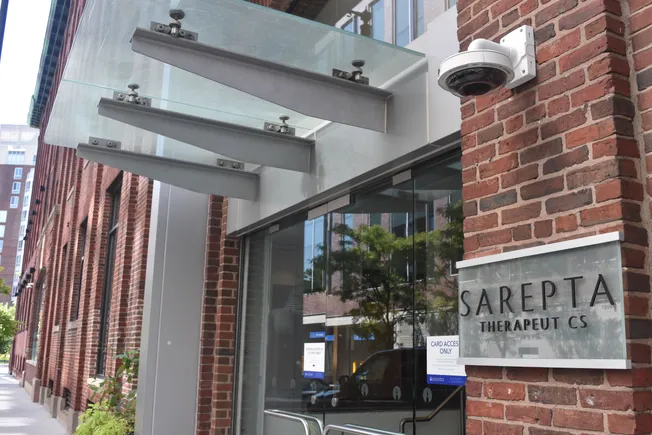FDA advisers recommend Pfizer, Moderna COVID-19 vaccines for youngest children


Advisers to the Food and Drug Administration on Wednesday recommended both Pfizer’s and Moderna’s COVID-19 vaccines in children as young as 6 months old, paving the way for an agency decision on their use in the only age group still ineligible for vaccination in the U.S.
In separate 21-0 votes, the independent experts agreed the benefits of Moderna’s two-shot regimen and Pfizer’s three-shot series outweigh the risks for young children and infants. The FDA typically sides with its advisory committee’s recommendations, though not always.
“There are so many parents who are absolutely desperate to get this vaccine,” said panelist Jay Portnoy, a professor of pediatrics at Children’s Mercy Hospital and a consumer representative on the panel. “We owe it to them to give them a choice to have the vaccine if they want it.”
“Having a COVID vaccine available for this patient population is critically important, given that pediatric cases can be, have been, and may be problematic in the future,” added Henry Bernstein, a professor of pediatrics at Cohen Children’s Medical Center.
A Centers for Disease Control and Prevention panel is also set to meet this week, likely to discuss any forthcoming FDA authorization and to make its own assessment. Should the FDA and CDC sign off, vaccinations could reportedly start as soon as next week.
The votes put protection from COVID-19 within reach of the roughly 19 million U.S. children under 5 who, more than two years into the pandemic, are not yet cleared to receive any vaccine.
Although kids are less likely than adults to become severely ill or die from COVID-19, about 4,000 children four years or younger have been hospitalized since the pandemic’s start, CDC data show. A majority of those children didn’t have underlying health conditions and 442 died, said Peter Marks, director of the FDA’s vaccine review office.
COVID-19 is also associated with a potentially life-threatening immune response known as MIS-C. Mild cases can have longer-lasting symptoms, spark outbreaks in daycare facilities and communities, and disrupt work for parents, too.
“Having cared for many children that have been in the ICU, on ventilators, with COVID and with MIS-C, and having cared for several children that have died of COVID, we need to be able to prevent [it],” said Evan Anderson, an associate professor of pediatrics and medicine at Emory University and an investigator in COVID-19 vaccine trials, at the meeting.
Yet there are still important questions about the protection each shot offers. Both vaccines target the virus’ original strain, not the newer omicron, and haven’t been tested against the subvariants BA.4 and BA.5 that could soon become dominant in the U.S. It’s unclear how long protection will last in younger children, whether boosters will be necessary and how well they can prevent COVID-19’s worst health outcomes.
In other age groups, though, the original vaccines have remained protective against hospitalization and death, especially after a booster. Presenting at the meeting, Moderna and Pfizer executives said they expect similarly strong efficacy for young children based on their clinical trial data to date.
Still, some panelists were worried that children may not get all of the required shots. While 67% of the U.S. population is fully vaccinated, only 47% have gotten a booster shot, for instance. It’s been a “struggle” to convince some adults to get even two shots, said one panelist, Jeanette Lee of the University of Arkansas. Kids under 5 will have to get as many as three, and in Pfizer’s case, the third is necessary.
“I just wonder whether parents will understand that,” added Paul Offit, a professor of pediatrics at Children’s Hospital of Philadelphia.
Moderna and Pfizer have been testing their shots through a process known as “immunobridging,” in which immune responses to vaccination are compared to those in older age groups. That strategy worked well for adolescents and children 5 and older, but has taken longer with younger kids.
The FDA last year asked Moderna to boost the size of its trial, pushing back its completion. It also took time to find a lower dose that struck the right balance of safety and effectiveness — a challenge made harder by omicron, which was the dominant strain when the companies’ trials were run.
Pfizer initially was on the wrong side of that balance, finding that two doses of its vaccine didn’t work well versus omicron, leading to a monthslong delay of its own. After adding an additional dose, Pfizer reported in May that three shots were 80% effective in preventing COVID-19 among children younger than 5, although its estimate was based on only a small number of cases.
Moderna, by comparison, reported lower efficacy — 51% in children 6 months to 2 years old and 37% in 2- to 5-year olds — in its trial, which also had few cases.
Top FDA vaccine officials cautioned Wednesday that efficacy rates shouldn’t be directly compared given the preliminary nature of the results and small sample sizes.
Neither company observed myocarditis, or heart inflammation, in their testing in children. The side effect has been linked to both vaccines in very rare cases, typically in older adolescents, and is also associated with COVID-19.
Overall, reactions to vaccination were generally consistent with what’s previously been observed in older teenagers, but at lower rates. However, the trials were likely too small to detect very rare side effects, the FDA noted in documents published ahead of the meeting.
For children under 5, Moderna is using a dose one-fourth the size of the one given to adults. Pfizer tested a dose one-tenth of the amount of the adult version. The first two doses are given weeks apart, while the third is administered at least two months later.
Editor’s note: This story has been updated with additional detail.
This post has been syndicated from a third-party source. View the original article here.




